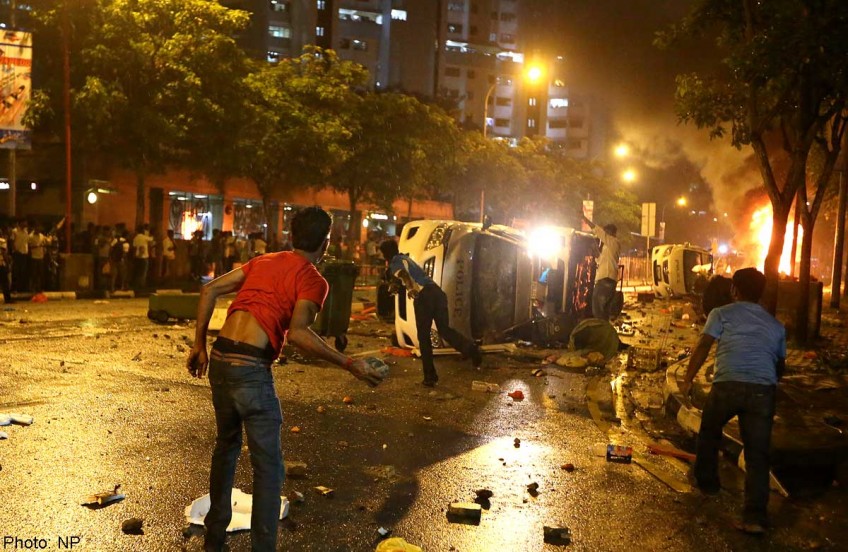'Misunderstandings intensified rioters' fury'

The Committee of Inquiry (COI) into last December's riot in Little India found that several misunderstandings about the fatal bus accident that sparked the fracas, and Indian cultural attitudes both contributed to the violence.
Evidence and eyewitness accounts indicated that the "triggering cause of the riot" was a road traffic accident that killed construction worker Sakthivel Kumaravelu, the COI said in its report released yesterday.
It added that the mob's "perceptions and misperceptions about what followed ignited further fury that led to an escalation in violence and scale of the riot".
These included wrongly holding the driver of the bus responsible for the death of the worker from India, when investigations later showed the victim had, in fact, fallen under the bus by his own doing.
The blame was not born out of malice, noted the committee.
"As bystanders, they could not have known that Mr Kumaravelu had fallen under the bus while running in (the bus driver's) blind spot, nor that Mr Kumaravelu had fallen because he had lost balance after placing his hand on the moving bus," read the report.
The crowd also misunderstood the intentions of the first responders, it added, and the workers could have been enraged that public officers were shielding rather than handcuffing the driver and the bus timekeeper.
Interviews with workers revealed that rumours about Mr Kumaravelu being pinned under the bus alive and crying for help - when he had, in fact, died upon impact - could have led the crowd into thinking that rescue efforts were insufficient.
Other misguided rumours about the bus timekeeper having pushed Mr Kumaravelu off the bus prior to the accident even though she was not near the bus when the incident occurred, and of first responders kicking or disrespecting the body also "contributed to a sense of injustice that fuelled the anger of the crowd".
What followed was an attempt by the mostly South Asian workers to exact "street justice" in targeting the driver, the bus, the timekeeper, and the first responders.
"Street justice involves punishment meted out by members of the public to people who are perceived as 'wrongdoers'," reported a Behavioural Analysis Group, convened at the request of the COI Investigation Team and led by Home Team senior consultant psychologist, Dr Majeed Khader.
This was supported by testimonies of individuals who lived or grew up in India, said the COI.
A "sub-culture... among some working-class men in Tamil Nadu" to "feel heroism" in disobeying law enforcement could have further compounded issues, heard the committee.
However, the COI also noted that people holding such beliefs "constitute a very small minority (in) Singapore's foreign worker population".
Nanyang Technological University assistant professor of sociology Premchand Varma Dommaraju, who studies Indian population issues and teaches about society and culture in South Asia, agreed that the findings corroborated "common behaviour" in India.
"Carrying out 'street justice' and disobeying law enforcement is common in India," said Dr Dommaraju, himself from Tamil Nadu.
"Disobeying is not seen as confrontational, it's just a way to make a point."
He said law enforcement officers should be better trained on dealing with people from different cultures.
Institute of Policy Studies senior research fellow Mathew Mathews agreed that the desire for street justice "cannot be discounted in accounting for what happened" though it is "nearly never demonstrated in Singapore".
However, National University of Singapore assistant professor in sociology Manjusha Nair, who grew up in South India, disagreed that a cultural explanation of the behaviour of the rioting workers was "entirely satisfactory".
"Stereotyping the cultural traits of the workers and essentialising their characteristics will take our attention away from the external problems that might have contributed to the riots," she said.
"In my opinion, we need to think seriously about solutions and look beyond cultural explanations, in order to prevent such incidents in future."

This article was first published on JULY 1, 2014.
Get a copy of The Straits Times or go to straitstimes.com for more stories.